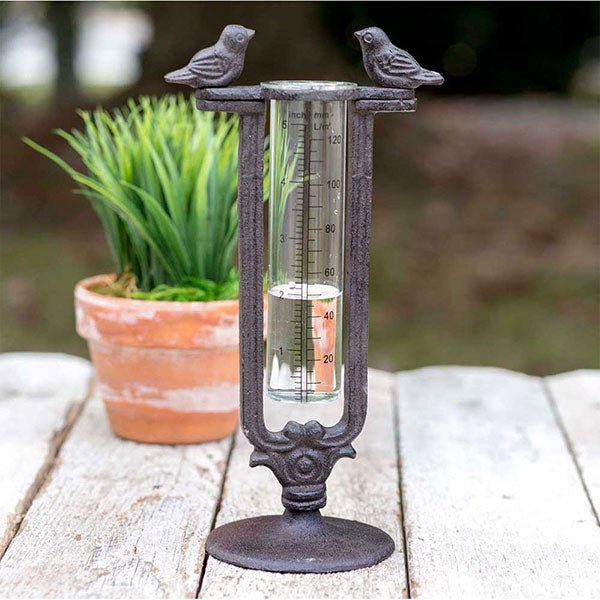The Rain Gauge: Decoding Rainfall Patterns and Enhancing Weather Awareness
Wiki Article
DIY Rain Scale: Easy Actions to Make Your Own
Are you curious about tracking rainfall in your location? Creating your very own DIY rainfall gauge is a straightforward and efficient means to determine and record rainfall. With simply a few usual materials and some standard steps, you can quickly create your own rainfall gauge in the house. In this guide, we will provide you with a detailed process to assist you create your very own rainfall gauge. No requirement for any specialized expertise or equipment - this job can be completed by any individual. By following these basic instructions, you will have a dependable device to measure rainfall and add to your understanding of the local weather condition patterns. So, allow's get begun on making your DIY rainfall gauge today!Gather Materials
To start creating your DIY rainfall scale, gather all the essential materials making use of an extensive checklist of products. Having the appropriate materials on hand will certainly ensure the effective production of your rain scale and allow for precise dimensions of rainfall. Collecting these products beforehand will simplify the construction procedure and guarantee that you have whatever you require to create your very own Do it yourself rainfall gauge.Prepare the Container

Mark the Measurement Increments
To accurately determine the amount of rainfall, accurately marking the dimension increments on your do it yourself rain gauge is essential. Without clear and precise markings, it would certainly be challenging to identify the exact quantity of rainfall accumulated in your rainfall gauge. Here are the actions to mark the dimension increments on your rain scale.First, select the device of measurement that you wish to make use of. One of the most usual devices for measuring rains are millimeters and inches. When you have actually chosen the device, utilize a long-term pen or waterproof paint to note the increments on the side of your rainfall gauge. For inches, you can mark every quarter inch or every fifty percent inch, depending on your choice. For millimeters, you can mark every 10 millimeters or every 20 millimeters.
When noting the increments, it is very important to guarantee that they are equally spaced and plainly visible. Utilize a leader or gauging tape to ensure accuracy and uniformity. In addition, ensure that the markings are resistant to fading or abrading, as direct exposure to the components may cause them to degrade with time.
Area the Rain Gauge Outdoors
The rainfall scale must be put outdoors to precisely gather rainfall Full Report data. The location picked for the rainfall scale must be complimentary and open from any type of obstructions that could potentially influence the dimension of rains. The Rain Gauge.Furthermore, it is important to position the rain scale on a secure surface, such as a level ground or a sturdy blog post. This will certainly stop any activity or tilting of the gauge, which could result in incorrect measurements. It is likewise recommended to look at this site avoid positioning the scale near any resources of man-made water, such as sprinklers or water drainage systems, as this might disrupt the precision of the measurements.
Monitor and Document Rainfall Information
Routine monitoring and recording of rains data is crucial for precise data evaluation and interpretation. By monitoring rainfall dimensions, you can acquire valuable understandings into climate patterns, climate fads, and water resource monitoring. To efficiently monitor and videotape rainfall information, it is necessary to develop a routine and keep constant techniques.Firstly, make certain that your rain scale is positioned in an open area far from barriers such as trees or buildings that may obstruct rains. In addition, make certain the rainfall gauge is degree and firmly secured to stop any motion that can impact the precision of the dimensions.

When videotaping the rains information, it is essential to note the date and time of each measurement. Utilize a ruler or a determining adhere to establish the rains deepness in the rainfall scale, and document this details properly.
To make certain the precision of the dimensions, it is suggested to empty the rain gauge after each recording. This will certainly protect against any kind of overflow or dissipation from impacting subsequent measurements.
Final Thought
In conclusion, creating a DIY rainfall gauge is a simple and sensible way to check and tape rainfall information (The Rain Gauge). By complying with the actions detailed in this short article, you can conveniently gather products, prepare the container, note the measurement increments, and put the rain scale outdoors. On a regular basis keeping an eye on and tape-recording rains data can provide beneficial info for various objectivesHaving the best products on hand will make certain the successful production a fantastic read of your rain gauge and permit for accurate dimensions of rainfall.To precisely gauge the amount of rains, properly marking the dimension increments on your Do it yourself rain scale is essential.The rain scale should be put outdoors to accurately gather rains data. The place picked for the rain gauge must be complimentary and open from any kind of obstructions that might possibly affect the measurement of rainfall.In verdict, developing a DIY rain gauge is a straightforward and useful way to keep an eye on and videotape rainfall data.
Report this wiki page